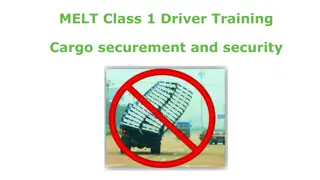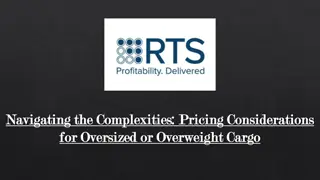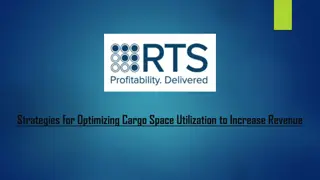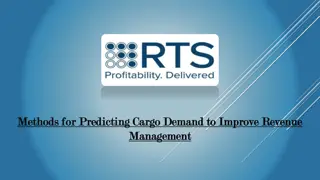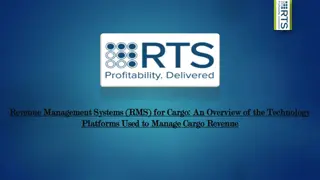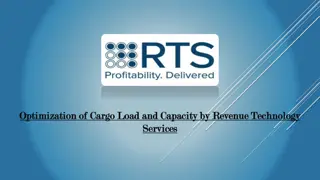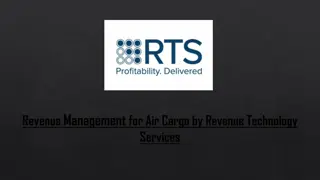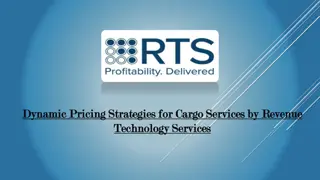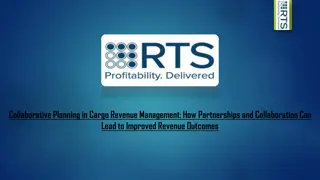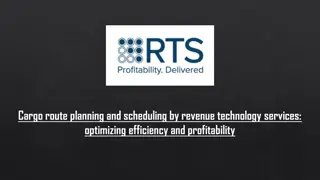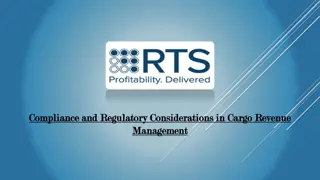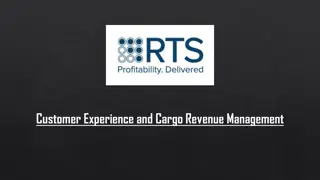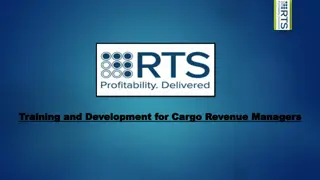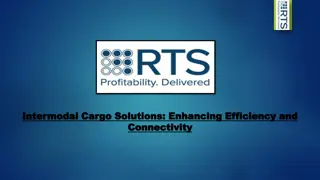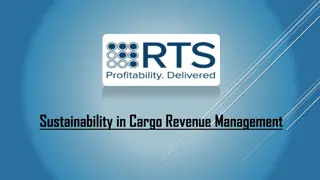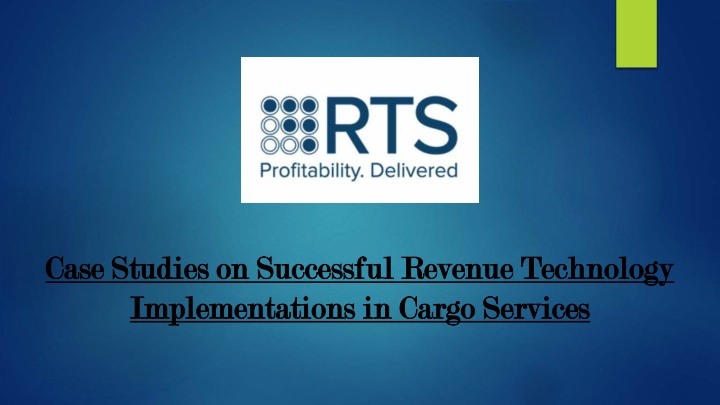
Case Studies on Successful Revenue Technology Implementations in Cargo Services (1)
In the fast-paced world of cargo services, optimizing pricing strategies remains a pivotal challenge for businesses aiming to boost profitability and maintain competitive advantage. Revenue technology, specifically tools that enable dynamic and cargo pricing, has revolutionized how companies approach this challenge. This blog explores several successful implementations of these technologies, providing insights into their transformative impacts on the industry.n
Download Presentation

Please find below an Image/Link to download the presentation.
The content on the website is provided AS IS for your information and personal use only. It may not be sold, licensed, or shared on other websites without obtaining consent from the author. If you encounter any issues during the download, it is possible that the publisher has removed the file from their server.
You are allowed to download the files provided on this website for personal or commercial use, subject to the condition that they are used lawfully. All files are the property of their respective owners.
The content on the website is provided AS IS for your information and personal use only. It may not be sold, licensed, or shared on other websites without obtaining consent from the author.
E N D
Presentation Transcript
Case Studies on Successful Revenue Technology Case Studies on Successful Revenue Technology Implementations in Cargo Services Implementations in Cargo Services
In the fast-paced world of cargo services, optimizing pricing strategies remains a pivotal challenge for businesses aiming to boost profitability and maintain competitive advantage. Revenue technology, specifically tools that enable dynamic and cargo pricing, has revolutionized how companies approach this challenge. This blog explores several successful implementations of these technologies, providing insights into their transformative impacts on the industry. 1. Dynamic Pricing Model in Air Freight Services 1. Dynamic Pricing Model in Air Freight Services One of the first case studies centers around a leading air freight company that decided to overhaul its pricing strategy by implementing a dynamic pricing solution. The challenge was to adjust prices in real-time, based on changing market conditions and demand fluctuations. The solution integrated advanced algorithms that analyzed vast amounts of data, including cargo capacity, booking patterns, and external economic factors. The implementation of dynamic pricing allowed the company to optimize prices per shipment automatically. For example, during periods of high demand, prices were adjusted upwards, whereas, in slower periods, prices decreased to attract more customers. The results were significant. The company reported a 15% increase in revenue within the first year of adoption. Moreover, the technology enabled them to achieve higher load factors and reduced the number of trips with excess capacity.
2. Cargo Pricing Technology in Ocean Freight 2. Cargo Pricing Technology in Ocean Freight Another noteworthy case study involves a global ocean freight company that implemented a specialized cargo pricing technology. The primary goal was to streamline the pricing process and improve accuracy by replacing the older, manual systems. The technology provided a centralized pricing platform that delivered real-time pricing recommendations based on historical data, competitive analysis, and market trends. This strategic move not only enhanced operational efficiency but also improved the accuracy of pricing. The company experienced a 20% reduction in administrative costs related to pricing management. Additionally, the technology fostered better customer relationships through transparent and fair pricing practices, which in turn, increased customer retention rates. 3. Combining IoT with Dynamic Pricing in Rail Freight 3. Combining IoT with Dynamic Pricing in Rail Freight A pioneering example in the rail freight sector demonstrates the integration of the Internet of Things (IoT) with dynamic pricing mechanisms. A European rail freight operator implemented IoT devices across its fleet to gather real-time data on cargo conditions, train locations, and route congestion. This data was then utilized by their dynamic pricing software to adjust prices based on real-time cargo status and route efficiency. This innovative approach allowed the company to offer premium pricing on routes where they offered faster delivery times due to less congestion or better cargo handling. As a result, they reported an improvement in customer satisfaction, as clients were willing to pay more for the assurance of quicker and safer deliveries. The implementation led to an increase in net profit margins by approximately 10% annually.
4. AI 4. AI- -Driven Dynamic Pricing in Multimodal Transport Driven Dynamic Pricing in Multimodal Transport The final case study involves a multimodal transport company that adopted an AI-driven dynamic pricing engine. This system was capable of processing complex datasets, including traffic patterns, weather forecasts, and global economic indicators, to dynamically adjust cargo rates across different modes of transport like road, rail, and air. The AI system provided granular control over pricing, allowing the company to adapt to rapid changes in the market environment swiftly. This capability was particularly beneficial during periods of unforeseen disruptions, such as weather-related delays or geopolitical tensions, ensuring optimal pricing at all times. The outcome was a robust increase in annual revenue by 18%, alongside enhanced route and mode optimization. Conclusion Conclusion The case studies outlined above underscore the substantial benefits that revenue technologies, particularly those focused on dynamic and cargo pricing, bring to the cargo services industry. These technologies not only drive revenue growth and operational efficiency but also enhance customer satisfaction by providing more responsive and adaptive pricing strategies. As the industry continues to evolve, embracing these advanced technologies will be crucial for companies aiming to stay ahead in the competitive landscape.
THANK THANKYOU YOU


